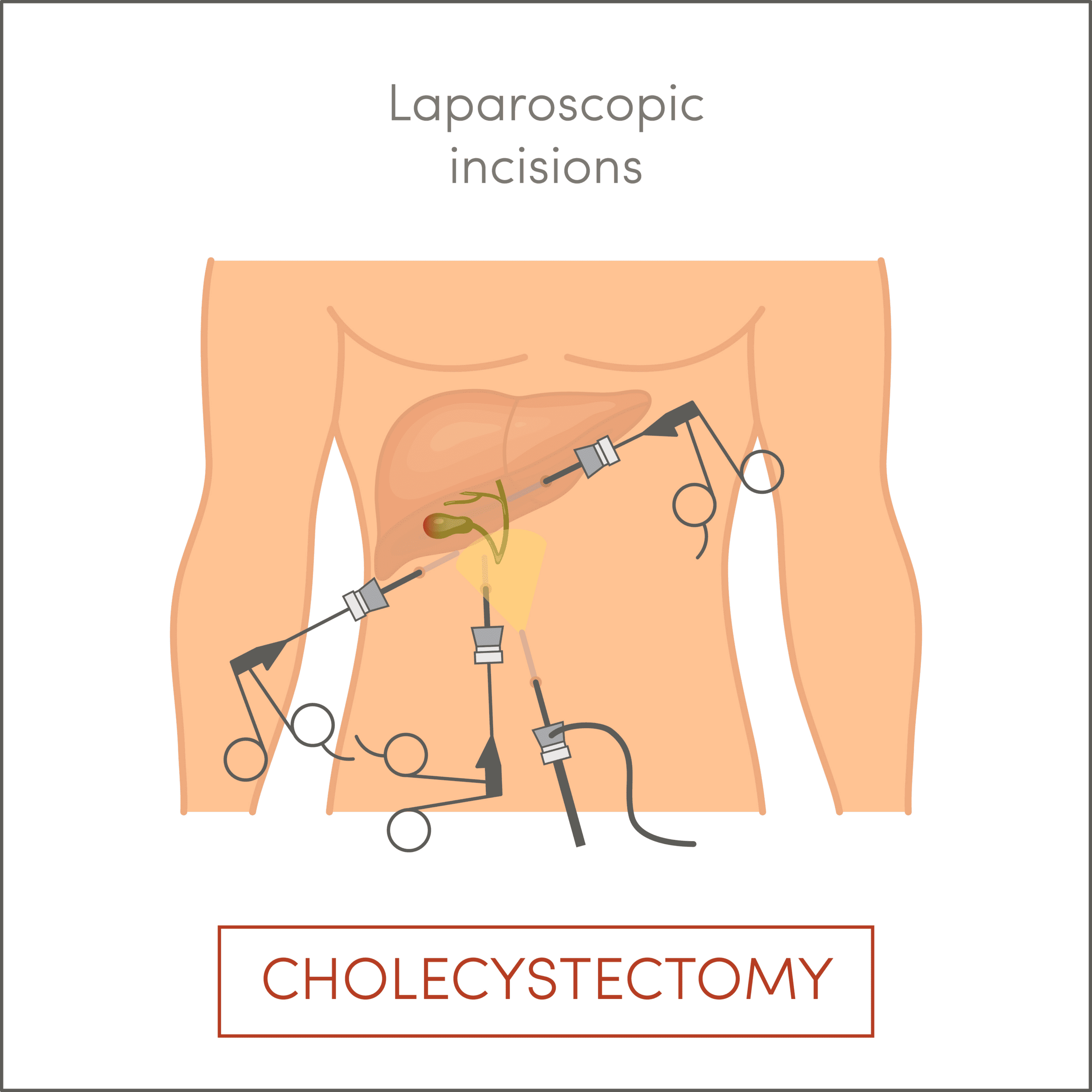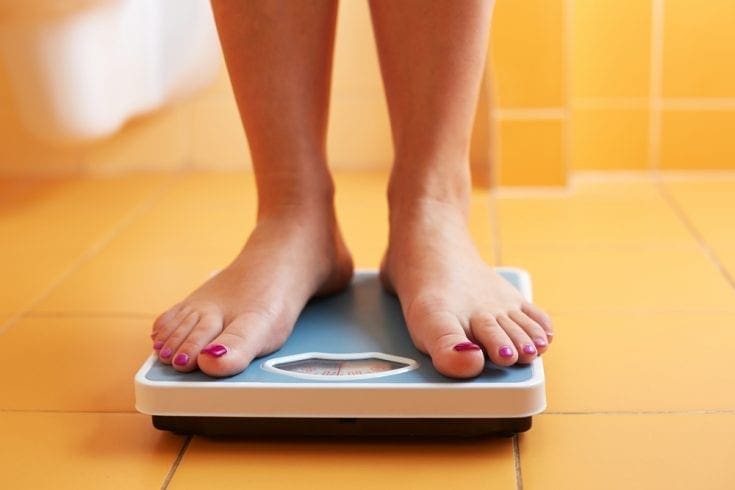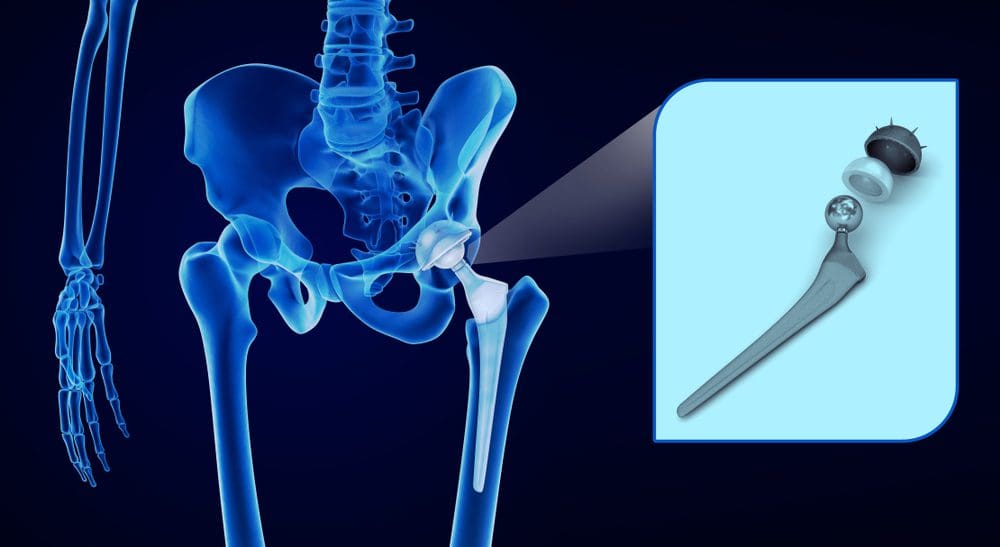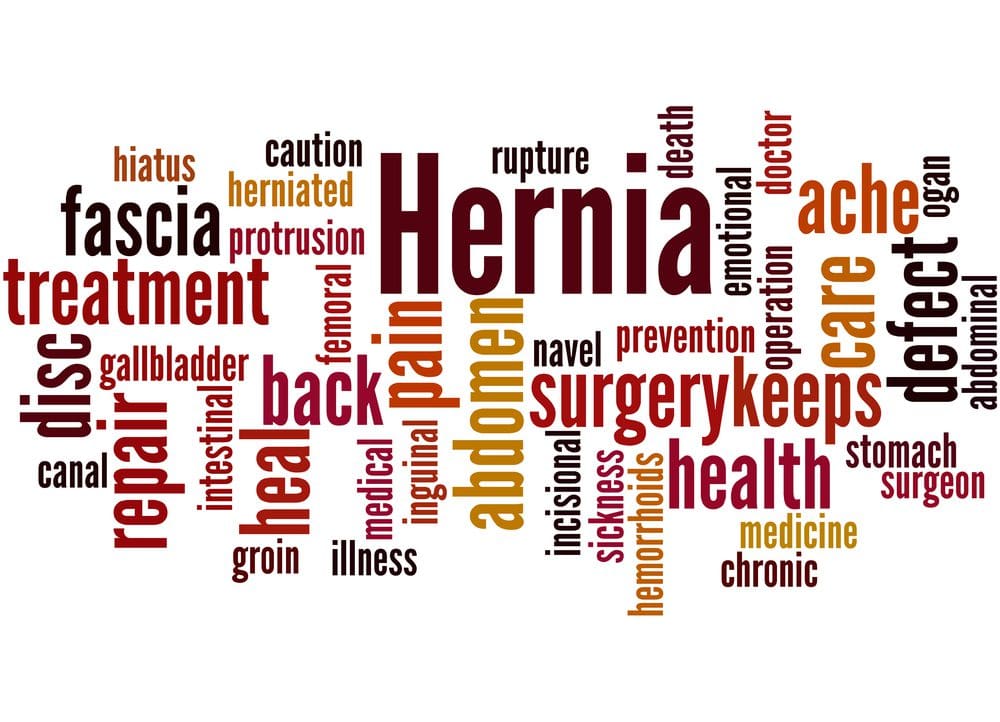
Cholecystectomy is a surgical procedure to remove the gallbladder via single or multiple incisions in your abdomen. The gallbladder is a pear-shaped organ located just below your liver on the upper side of the abdomen. It collects and stores bile, which is a fluid produced by the liver that passes through into the small intestine to help break down and absorb dietary fats. This plays a role in keeping your cholesterol levels in check.
However, even without a gallbladder, normal digestion is possible.
Gallbladder removal is a treatment option, if:
- It has lumps of solid substances (Gallstones).
- It becomes severely diseased and inflamed (Cholecystitis).
- It doesn’t correctly empty bile due to a fault in its motion (Biliary dyskinesia).
- It doesn’t correctly empty bile due to blockage in bile ducts (Choledocholithiasis). This typically happens when gallstones have moved to the bile ducts and may be stuck there resulting in blockage and doesn’t allow gallbladder and bile ducts to drain.
- Inflammation of the pancreas (pancreatitis) is also a condition that indicates the need for gallbladder removal.
Some symptoms that may specify the need for gallbladder removal are:
- Yellowing of the skin (jaundice), typically due to the bile duct’s blockage.
- Fever
- Nausea
- Bloating
- Sharp pain in the right upper part of your abdomen that can radiate to the middle abdomen, right shoulder, and back.
How Does Cholecystectomy Work?

The Procedure
Prior to Procedure: You may undergo certain tests to ensure that you’re healthy enough for the surgery. These may include:
- Blood Tests
- Imaging tests of your gallbladder
- A review of your medical history
- A complete physical exam
After that, your surgeon will perform cholecystectomy using general anaesthesia. Anaesthesia is given through a vein in your arm, so you wouldn’t be aware during the procedure. Once the anaesthesia takes effect, your surgeon will perform the cholecystectomy using the either laparoscopic or open method.
During the Procedure: Depending upon your condition, your surgeon will perform one of two cholecystectomy methods:
- Open (traditional) Method: In the open cholecystectomy method, a single large incision of 6 inches (15 centimetres) is made on the right side of your abdomen. The abdominal muscles and tissues are then pulled back. After that, your surgeon will take out the gallbladder. This procedure takes one or two hours.
- Laparoscopic Method: It’s less incisive and uses 3-4 very small incisions. In this method, an incision about 1cm long is made and a thin long tube called a laparoscope is put in through this incision. The tube has surgical tools and a tiny video camera. To visualize your liver and gallbladder, carbon dioxide gas is used to inflate your abdomen. Three additional small incisions are then made to provide access points for different surgical instruments. After that, your surgeon does the surgery while looking at the TV monitor. The gallbladder is removed through one of the incisions.
| - | Open Cholecystectomy | Laparoscopic Cholecystectomy |
|---|---|---|
| Scaring | A six inches (15cm) scar | Four small incisions (minimal scaring) |
| Bleeding | More | Less |
| Hospital Stay | 3-4 days | A day or less |
| Full Recovery | 4-6 weeks | 1 week (faster recovery) |
| Wound Pain | Significant wound pain and may require patient-controlled analgesia for 2-3 days | Minimal discomfort and only mild painkillers (e.g. paracetamol) required |
The laparoscopic method is not suitable for everyone and there is a possibility that your surgery may start as laparoscopic cholecystectomy and then may need to be converted into open cholecystectomy.
Reasons for conversions to open cholecystectomy
- In some cases, the laparoscope may show that the gallbladder is severely diseased and is more difficult to remove through the laparoscopic method because it may have affected surrounding areas. Therefore in such cases, your surgeon may have to use the open method to safely remove your gallbladder.
- Patients, who have had prior abdominal surgeries, may have inflammatory conditions near the gallbladder such as scar tissue adhesions. It also makes laparoscopic surgery more difficult and your surgeon may have to finish the procedure through the open method.
- In other cases, heavy bleeding is also a reason for conversion into open cholecystectomy if it’s hard to stop laparoscopically.
The Results
Gallbladder removal will stop the pain and discomfort caused by gallstones. In most cases, gallbladder removal will also stop gallstones from recurring. Patients undergoing laparoscopic cholecystectomy can get back to work after a week. Those undergoing open cholecystectomy may need 4-5 weeks to fully recover.
Summary of the Treatment
| Procedure time | 1-2 Hours | ||||
| Back to home from the hospital |
| ||||
| Full recovery |
| ||||
| Common Risk & Complications | Bleeding, Infection, Blood clots, Injury to nearby structures such as bile ducts |
Statistics of Cholecystectomy or Gallbladder removal in the UK
In the UK, almost 70,000 cholecystectomies are performed each year (1).
How Much does Cholecystectomy or Gallbladder Removal Cost in the UK?
At private hospitals and clinics in the UK, a cholecystectomy or gallbladder removal typically costs between £5,094 and £7,175 (excluding initial consultation fees and X-ray charges).
Compare the Cost of Cholecystectomy in the UK.
The cost varies in different parts of the UK as described in the table below:
| City | Highest Price | Lowest Price | Details of Surveyed Hospitals |
|---|---|---|---|
| London | £6,525 Spire Bushey Hospital | £5,094 Spire London East Hospital | |
| Manchester | £7,175 The Alexandra Hospital | £5612 Euxton Hall Hospital | |
| Leeds | £6,975 The Duchy Hospital | £5,195 Nuffield Health Leeds Hospital | |
| Scotland | £7,000 Ross Hall Hospital | £6,312 BMI Albyn Hospital | |
| Southampton | £7,110 Nuffield Health Wessex Hospital | £5,210 Practice Plus Hospital Southampton | |
| Wales | £6,900 BMI Werndale Hospital | £5,850 Spire Cardiff Hospital | |
| Bristol | £6,155 Nuffield Bristol Hospital | £5,820 Spire Bristol Hospital | |
| Birmingham | £6,975 The Edgbaston Hospital | £5,249 West Midlands Hospital | |
| Norwich | £6,081 Spire Norwich Hospital | £5847 Oaks Hospital |
Frequently Asked Questions
1. Can I live without my gallbladder?
Yes, your gallbladder simply stores bile. After your gallbladder is removed, your bile duct is still left intact and bile passes from your liver into the small intestine.
2. Do I need to schedule a cholecystectomy in advance?
In most cases, a cholecystectomy is planned in advance but in some cases emergency gallbladder removal is necessary.
3. Can I try other treatments before surgery?
Dietary changes can help manage symptoms such as cutting back on fatty foods. However, dietary changes don’t always aid to prevent gallbladder attacks. Your doctor will prescribe certain medications to dissolve gallstones if surgery isn’t an option for you. Medications can take months to work and there are still chances of gallstones recurring.
4. How can I take care of myself after gallbladder removal?
After surgery, do the following things to avoid complications and to help you recover:
- Try to take short daily walks to help prevent blood clots.
- Drink plenty of water to avoid dehydration.
- Avoid lifting heavy things (more than 10 pounds) for at least four to six weeks.
- Consume high-fibre foods to regulate your bowel movement.
- Avoid wearing tight clothes to prevent rubbing against the incisions.
- Follow your doctor’s instructions about medications and taking care of your wounds.
Conclusion
Cholecystectomy is the most effective treatment for gallstones. It’s considered to be a safe procedure that prevents gallstones from recurring. We highly recommend you consult your healthcare provider as they can give you the best advice regarding the benefits and risks of surgery.








